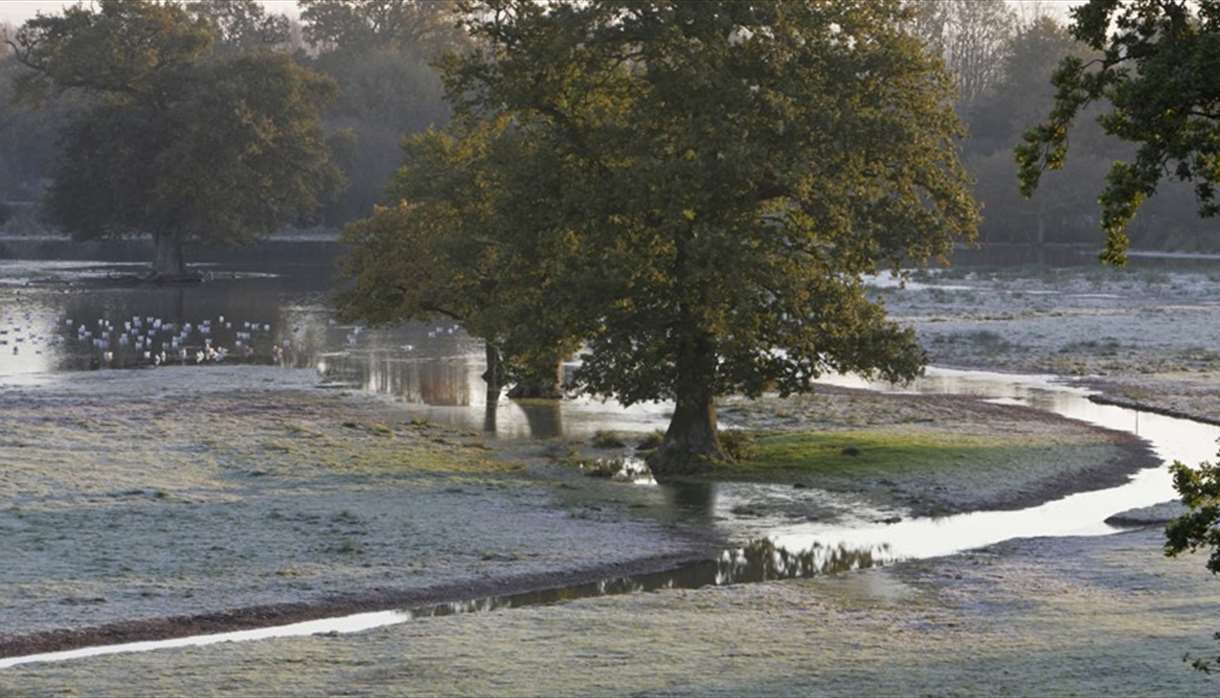

Part of the large East Devon Pebblebed Heaths Site of Special Scientific Interest (much of which is managed by Clinton Devon Estates) Aylesbeare Common is a large area of lowland heath. Both wet and dry areas of heath occur, together with small springs and flushes. These habitats support a diverse flora. As well as heather and its relatives, plants such as heath dog violet and heath spotted orchid can be found. Bog asphodel and the insectivorous sundew grow in the wetter areas. Of note among the animal life are strong populations of the Dartford warbler and, in summer, the nightjar.
Aylesbeare is also important for its dragonflies, including the rare southern damselfly, and butterflies. It has the largest butterfly list of any RSPB reserve, with over 30 different species being regularly recorded. This area is also of considerable geological interest, lying on the Budleigh Salterton Pebble Beds, a formation of red, silty sands and well rounded quartzite gravels and cobbles dating from about 225 million years ago. The Pebble Beds originated from a variety of sources as a result of erosion and transport through a braided river system into a large piedmont (i.e. a tract of country at the foot of a mountain range) flood plain. The large size of many of the cobbles suggests that river flows were sometimes very powerful. Pebbles known locally as "popples" have been used for the construction of walls, floors and occasionally whole buildings in local villages. The name "popple" has given itself to the nearby village of Newton Poppleford.
More information can be experienced in English and BSL at www.aylesbeare360.co.uk
Where: SY 055904
When: Views to the sea and across landscape are clearer in the summer months. Flora still good at the end of the summer. Nightjars should still be around until the end of the summer season.
Facilities: Dogs Allowed (on lead / under control during summer months)
Hints and Tips: It has the largest butterfly list of any RSPB reserve, with over 30 different species being regularly recorded.
| Ticket Type | Ticket Tariff |
|---|---|
| Free Admission | Free |
Note: Prices are a guide only and may change on a daily basis.
It's on the west side of the Exe, on the outskirts of Exeter and halfway between the city centre and Exminster. It is on Bridge Road (A379) between Countess Weir Roundabout and the Exminster/Newton Abbot turnoffs, prior to the Devon Hotel, Matford. The walk/cycle way entry point to the reserve is close to the carriageway's pedestrian/cycle lights. Note: There are no parking facilities close by. The carriageway has a 'no stopping' restriction.
The Exe Estuary is a 26 mile cycle route & walkway which goes along the whole Exe Estuary…
Join, visit or play. Whether you live locally in Exeter or are visiting the region,…
This reserve, part of the Exe Estuary SSSI, is sandwiched between the river Exe and the…
Popular with birdwatchers, walkers and picnickers, Belle Isle Park is a quiet riverside…
Exeter offers excellent course fishing opportunities with Exeter and District Angling…
Exeter is home to England’s oldest ship canal (built in the 1560s) which is still…
Visit the Quay Climbing Centre to scale the south west's largest indoor climbing wall in…
Exeter has numerous cycle routes which form part of a cycle network. These have been…
AS Watersports are pleased to offer Canoe, Sit on top kayak and paddleboard hire on the…
Clip ‘n Climb Exeter – Fun, Active, and Totally Unique!
Clip ‘n Climb at The Quay…
The Quay Climbing Centre – climbing for everyone
Looking for a fun and exciting activity…
Clip ‘n Climb Exeter – Fun, Active, and Totally Unique!
Clip ‘n Climb at The Quay…
Pass through beautiful riverside towns and villages steeped in maritime history on this…
One of Exeter’s most distinguished parks, the annual blossoming of Pinces Garden’s 45…
The Exeter Ship Canal first opened to shipping in 1566 and was the first canal to be…